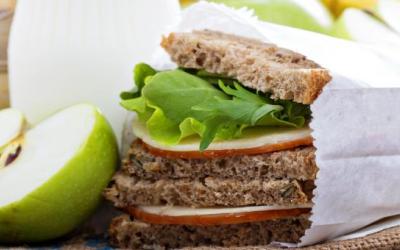Do laying hens need to change feed in winter - pay attention to first-winter chickens!

The main factor affecting the ability of chickens to lay eggs in winter is daylight hours. As the days shorten and the amount of light decreases, chickens adjust their biological rhythm, synchronizing their body activity with the natural cycles of light and darkness. As soon as the duration of daylight hours becomes less than 12 hours, egg production in adult laying hens decreases.
As you know, specialized feed enriched with calcium is produced for laying hens, and this is quite a significant cost item - such feed accounts for about 70 percent of maintenance costs. At the same time, feed for laying hens is an objective necessity during the laying period.
Calcium is the main component of eggshells and is directly related to keeping chickens healthy. The chicken skeleton contains a special type of bone called medullary bone, a calcium reservoir. Female birds can store calcium in their medullary bones, "pump out" the calcium to produce eggs, and then reabsorb the additional calcium for later use. This whole process is driven by hormones and is most active during the period when chickens lay eggs. What about winter? If egg production tends to zero, the need for calcium is small, so maybe keep the hens on cheaper feed until spring?
Here you need to focus on the age of the livestock. If you have young laying hens of good egg-laying crosses or breeds, they are likely to continue laying eggs throughout the winter if you provide them with good conditions in the coop. This is because these young chickens are at the peak of their reproductive development. Next year, second-winter hens will still produce one or two eggs every week, but once they are older than three years, they will take the entire winter off .
The conclusion is simple. For laying hens of the first and second winter, the specialized feed is not changed. In the case where the flock is already mature and does not produce eggs in winter, a cheaper standard feed with 16 percent protein is quite suitable, and you will return the laying diet a couple of weeks before the start of laying.
This leads to another useful consideration: for continuous egg production, constantly add new chickens to the flock of first-winter laying hens, and put the most unproductive old birds into fattening by the end of the season.
By correctly managing the age conveyor and understanding the nutritional needs of chickens at different stages of development and specificity, you will notice both savings and income.
Read together with it:
- Смоленская область — лидер России по производству крольчатиныВ интервью «Агроэксперту» заместитель председателя регионального правительства Алексей Кучумов отметил, что регион достиг самодостаточности по таким продуктам, как яйца, мясо и картофель, превышая уровень 100%. Кроме того, Смоленская область занимает первое место по посевным площадям льна, а также активно развивает молочное животноводство, с общим поголовьем более 1......
- New requirements for poultry exporters to Saudi Arabia: Saudi GAP certificationA key aspect of the innovation is the introduction of digital certification, which will simplify the certification and monitoring process. Currently, approximately 90% of local businesses are already registered in this system, and it will soon become mandatory for foreign suppliers. Certification will be a fee-based process and will be conducted annually. The cost is expected to be approximately 3...
- Саудовская Аравия вводит обязательную сертификацию поставщиков птицы и яиц: что ожидает российских экспортеровСертификация касается всех хозяйств, которые поставляют живую птицу или яйца на аттестованные предприятия, работающие с королевством. В Саудовской Аравии внедряется система цифровой сертификации, которая будет включать проверку всех сырьевых зон аттестованных предприятий, занимающихся поставками мяса птицы и яиц. В настоящее время около 9......
- Turkey production growth forecast for Russia for 2025-2026Following significant growth in the industry since 2001, at 15-20% per year, production is expected to reach 465,000 tons in 2025, with the forecast subject to revision due to a shortage of hatching eggs. In the first half of 2025, RUSSIA will produce 222,000 tons of turkey MEAT, an increase of 1.5% compared to 2......
- Цены на говядину в Ростовской области резко увеличилисьЦены на яйца, в свою очередь, колеблются в зависимости от затрат на корма, ветеринарные препараты, энергоресурсы и упаковку, однако в этом году они снизились на 18,35%. На фоне этого также наблюдается падение цен на некоторые фрукты и овощи, входящие в «борщевой набор»: капуста подешевела на 26,48%, картофель на 14,......
- Meat production has increased in the Angara region, but milk yields are declining.However, despite the increase in MEAT production, MILK yield declined by 1.6%, and egg production fell by 2.9%. Agricultural organizations accounted for the bulk of production, accounting for 99.4% of poultry, approximately 90% of pork and eggs, and approximately a quarter of all milk. At the same time, animal productivity increased: the average milk yield per cow was 5,68......
- Цены на яйца и мясо в Крыму увеличились из-за роста затрат производителейПо данным Крымского информационного агентства, в сентябре цены в регионе выросли на 0,8% по сравнению с августом. Услуги стали дешевле, но ограничения в предложении определённых продуктов также способствовали удорожанию. Несмотря на общую тенденцию, средняя стоимость яиц в Крыму остается ниже, чем по стране, с годовым снижением более чем на 15%.......




























































